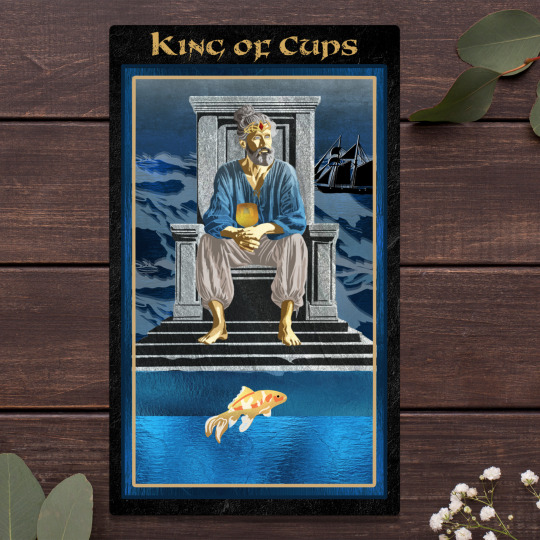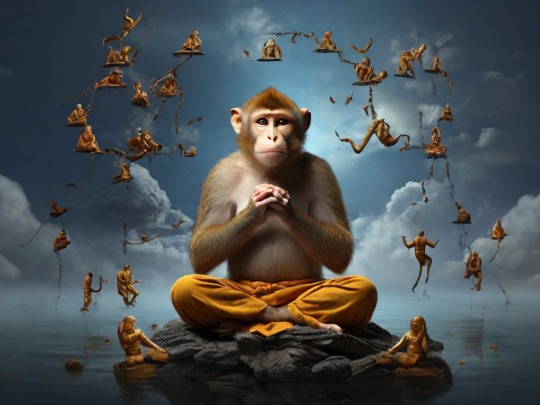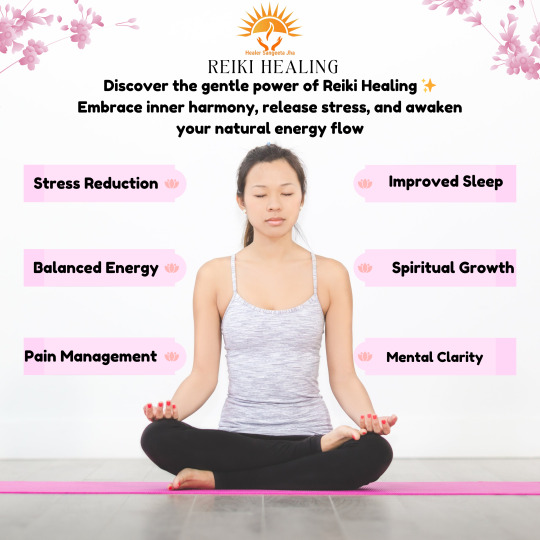#EmotionalBalance
Text

#DeserveHappiness#SelfCare#Wellbeing#PositiveEnergy#RestAndJoy#EmotionalBalance#PrioritizeYou#HealthyHappiness#InnerPeace#RenewedSpirit
192 notes
·
View notes
Text

"Maturity is the ability to think, speak, and act your feelings within the bounds of dignity."
— Samuel Ullman
#tarot#tarotcard#cardoftheday#tarotdeck#kingofcups#emotionalbalance#emotionalcontrol#generocity#emotionalwisdom#maturity
3 notes
·
View notes
Text

Frankincense essential oil, derived from the resin of the Boswellia tree, has been treasured for centuries for its remarkable properties. Packed with vitamins and minerals, this precious oil offers a wide range of benefits for both the body and mind. Let's explore the wonders of frankincense essential oil and discover how it can enhance your overall well-being.
Vitamins and Minerals in Frankincense Essential Oil:
Vitamin C: Known for its antioxidant properties, vitamin C helps protect the skin from damage caused by free radicals and supports collagen production.
Calcium: Essential for strong bones and teeth, calcium also plays a vital role in muscle function and nerve transmission.
Potassium: This mineral is crucial for maintaining healthy blood pressure, promoting heart health, and supporting proper kidney function.
Iron: Necessary for the production of red blood cells, iron helps transport oxygen throughout the body, supporting energy levels and overall vitality.
Benefits of Frankincense Essential Oil:
Stress Relief: Frankincense essential oil is renowned for its calming properties, helping to reduce stress and anxiety levels, promoting relaxation and inner peace.
Skin Rejuvenation: With its rejuvenating effects, frankincense oil can help minimize the appearance of fine lines, wrinkles, and age spots, leaving your skin looking radiant and youthful.
Respiratory Support: Inhalation of frankincense oil may assist in clearing congestion and supporting respiratory health, making it beneficial for those dealing with respiratory issues.
Emotional Balance: The aroma of frankincense oil has a grounding and centering effect, helping to balance emotions, enhance focus, and promote a sense of tranquility.
Immune System Support: Frankincense oil contains compounds that can support a healthy immune response, assisting in warding off pathogens and supporting overall immune function.
Experience the incredible benefits of frankincense essential oil and unlock the potential of this ancient remedy. Incorporate it into your daily routine, whether through aromatherapy, topical application, or in combination with other carrier oils. Discover the natural power of frankincense essential oil and embark on a journey towards improved well-being

To explore a wide variety of essential oils and find the perfect addition to your wellness routine, browse our collection and unlock the full potential of nature's healing gifts.
#FrankincenseEssentialOil#NatureRemedies#StressRelief#SkinRejuvenation#RespiratorySupport#EmotionalBalance#ImmuneSystemBoost#HolisticWellness#AncientRemedies#NaturalHealing
2 notes
·
View notes
Text
Taming the Monkey Mind: Buddhist Techniques for Emotional Balance

In the bustling theatre of our minds, emotions often play the leading role, swinging from one thought branch to another like a restless monkey. This constant chatter, known as the "Monkey Mind," can disrupt our emotional equilibrium, leading to stress, anxiety, and discontent. Buddhist teachings offer profound insights and techniques to tame this restless mind, fostering emotional balance and inner tranquility. This article delves into the concept of the Monkey Mind within Buddhist spirituality and provides a practical toolkit to help you cultivate emotional balance in your daily life.
Understanding the Monkey Mind in Buddhist Spirituality
The Monkey Mind, or the restless, unsettled state of mind, is a universal experience characterized by constant mental chatter, distractions, and fluctuations of emotions. In Buddhist spirituality, this phenomenon is closely related to the concept of "Samsara," the cycle of birth, death, and rebirth driven by our attachments, desires, and ignorance.
The Monkey Mind thrives on attachment to outcomes, clinging to past regrets, and fearing future uncertainties. It feeds on judgment, comparison, and the endless pursuit of desires, creating a turbulent inner landscape that clouds our judgment and robs us of peace.
Buddhist Techniques for Taming the Monkey Mind
1. Mindfulness Meditation
What it is: Mindfulness meditation involves cultivating awareness of the present moment, observing thoughts, emotions, and sensations without judgment.
How to practice:
Find a quiet space and sit comfortably.
Close your eyes and focus on your breath.
When your mind wanders, gently bring your attention back to your breath, acknowledging the wandering thought without judgment.
Benefits: Mindfulness meditation enhances self-awareness, reduces stress, and cultivates emotional balance by allowing you to observe the Monkey Mind without getting entangled in its chatter.
2. Practicing Non-attachment
What it is: Non-attachment involves letting go of clinging to desires, outcomes, and expectations, embracing impermanence and accepting the transient nature of life.
How to practice:
Reflect on areas where attachment causes emotional turbulence.
Practice letting go by acknowledging impermanence and focusing on the present moment.
Benefits: Non-attachment fosters emotional resilience, reduces suffering caused by attachment, and promotes a more balanced and equanimous state of mind.
3. Loving-kindness Meditation (Metta)
What it is: Metta meditation focuses on cultivating feelings of love, compassion, and kindness towards oneself and others.
How to practice:
Sit comfortably and close your eyes.
Begin by directing loving-kindness towards yourself, silently repeating phrases like "May I be happy, may I be peaceful."
Extend these feelings towards loved ones, acquaintances, and even those with whom you have conflicts.
Benefits: Metta meditation fosters compassion, reduces negative emotions, and strengthens interpersonal connections, promoting emotional balance and harmony.
4. Mindful Breathing
What it is: Mindful breathing involves focusing on the sensations of breathing, anchoring you in the present moment and calming the Monkey Mind.
How to practice:
Throughout the day, pause and focus on your breath.
Notice the sensations of breathing in and out, allowing it to ground you in the present moment.
Benefits: Mindful breathing promotes relaxation, clarity, and emotional balance, helping you navigate through emotional storms with calmness and poise.
5. Cultivating Gratitude
What it is: Gratitude involves recognizing and appreciating the positive aspects of life, fostering contentment and reducing the Monkey Mind's tendency to focus on negativity.
How to practice:
Keep a gratitude journal and write down three things you are grateful for each day.
Reflect on these moments of gratitude, cultivating a mindset of appreciation and abundance.
Benefits: Cultivating gratitude enhances emotional well-being, shifts focus from lack to abundance, and nurtures a positive outlook, reducing the grip of the Monkey Mind on your emotions.
Food For Thought:
Taming the Monkey Mind is a transformative journey towards emotional balance, inner peace, and spiritual growth. By incorporating mindfulness meditation, non-attachment, loving-kindness meditation, mindful breathing, and cultivating gratitude into your daily routine, you can tame the restless chatter of the Monkey Mind, fostering a more balanced, resilient, and harmonious state of mind.
Embrace these Buddhist techniques with an open heart and a curious mind, and watch as they unravel the knots of emotional turmoil, guiding you towards a life of greater serenity, clarity, and emotional balance.
#MonkeyMind#EmotionalBalance#BuddhistTechniques#MindfulnessMeditation#NonAttachment#LovingKindness#MindfulBreathing#GratitudePractice#InnerHarmony#SpiritualWellness#EmotionalResilience#CalmMind#MindBodySoul#PersonalGrowth#WellnessJourney
1 note
·
View note
Text
Navigating Anger: Unraveling the Hidden Hazards and Exploring Paths to Inner Peace
"Hey there, warriors on the battlefield of emotions! 💪
I know that navigating the stormy seas of anger can feel like fighting a fierce dragon with a toothpick. It's tough, it's exhausting, but guess what? You're tougher! 💥
I just wanted to remind you
Ah, anger a bit like a grumpy old cat lounging in the corner of our emotional living room. It’s got claws, it’s got teeth, and boy, does it know how to make a racket! But let’s not be fooled by its furiously feline facade. Underneath that prickly exterior lies a whole bag of emotional tricks, and relying on anger as our go-to energy drink? Well, it’s a bit like trying to power a rocket ship with…

View On WordPress
#AngerIssues#CalmingTechniques#CopingMechanisms#CopingWithAnger#EmotionalBalance#EmotionalHealthAwareness#EmotionalResilience#EmotionalSelfAwareness#EmotionalWellBeing#InnerPeace#MentalHealthTips#MentalWellness#MindfulnessPractices#selfcarepractices#SelfCompassion#SelfHelpStrategies#StressManagement#StressReductionTechniques#ZenPhilosophy
0 notes
Text
Exploring the Power of Colour Therapy: Healing Through Hues
Shaina Tranquilino
April 18, 2024

In a world where stress and anxiety seem to lurk around every corner, the search for holistic and alternative therapies has become increasingly popular. Among these, colour therapy stands out as a vibrant and intriguing approach to healing. Harnessing the power of colours to promote physical, emotional, and mental well-being, colour therapy offers a fascinating journey into the realm of chromatic healing.
Understanding Colour Therapy
Colour therapy, also known as chromotherapy or light therapy, is based on the principle that different colours evoke distinct emotional and physiological responses in individuals. Advocates of this therapy believe that exposure to specific colours can help balance energy levels within the body, thereby promoting health and harmony.
The Healing Power of Colours
Each colour is associated with unique properties and effects on the human psyche:
Red: Known for its stimulating properties, red is believed to increase energy levels and boost circulation. It's often used to combat fatigue and revitalize the body.
Orange: Symbolizing warmth and creativity, orange is thought to promote enthusiasm and emotional balance. It can be used to uplift spirits and foster a sense of optimism.
Yellow: Associated with joy and mental clarity, yellow is believed to stimulate the intellect and enhance concentration. It's often used to alleviate feelings of depression and promote mental alertness.
Green: Representing harmony and balance, green is said to have a calming effect on the body and mind. It's commonly used to reduce stress and promote relaxation.
Blue: Known for its calming and cooling properties, blue is believed to lower blood pressure and promote tranquility. It's often used to alleviate insomnia and promote a sense of serenity.
Indigo: Symbolizing intuition and spiritual awareness, indigo is thought to enhance intuition and promote deep relaxation. It's commonly used in meditation practices to facilitate inner exploration.
Violet: Associated with spiritual enlightenment and creativity, violet is believed to stimulate the imagination and foster a sense of inspiration. It's often used to encourage self-expression and spiritual growth.
Incorporating Colour Therapy Into Your Life
There are various ways to integrate colour therapy into your daily routine:
Surround Yourself with Colours: Choose clothing, décor, and accessories in colors that resonate with you and align with your desired intentions. Surrounding yourself with these hues can have a subtle yet profound impact on your mood and energy levels.
Colour Visualization: Practice colour visualization exercises, where you imagine yourself immersed in a specific colour that corresponds to your current needs. Visualizing these colours can help restore balance and promote inner harmony.
Light Therapy: Consider investing in light therapy lamps or devices that emit specific colours to target various health concerns. These devices are designed to simulate natural sunlight and can be particularly beneficial during the darker months or for those experiencing seasonal affective disorder (SAD).
Colour Meditation: Incorporate colour meditation into your mindfulness practice by focusing your attention on a specific colour and allowing its energy to flow through you. This can help clear blockages and promote a sense of clarity and renewal.
The Science Behind Colour Therapy
While colour therapy is often regarded as a complementary or alternative healing modality, there is growing interest in its scientific basis. Research suggests that colours can indeed influence physiological processes, such as heart rate, blood pressure, and hormone levels. Additionally, studies have shown that exposure to certain colours can affect mood and cognitive performance, further supporting the therapeutic potential of colour therapy.
Colour therapy offers a captivating approach to holistic healing, harnessing the innate power of colours to promote balance and well-being. Whether used independently or in conjunction with other therapeutic modalities, the vibrational energy of colours has the potential to uplift the spirit, soothe the soul, and restore harmony to the body and mind. As we continue to explore the intersections between science and spirituality, colour therapy remains a radiant beacon of hope and healing in our quest for holistic wellness.
#ColourTherapy#Chromotherapy#HolisticHealing#WellnessJourney#EmotionalBalance#MentalClarity#SpiritualGrowth#MindBodyHarmony#LightTherapy#ColourMeditation#VibrationalHealing#AlternativeTherapies#NaturalWellness#HealingColours#InnerPeace#PositiveEnergy#StressRelief#MoodBoost#HealthAndHarmony#ColourfulLife
1 note
·
View note
Text
What Is The Importance Of Yoga In Modern Life?
Unlock the importance of yoga in modern life for holistic well-being. Embrace its transformative power for physical, mental clarity, and stress management.
#YogaBenefits#MindBodyWellness#EmotionalBalance#HealthyLifestyle#WellnessJourney#YogaForHealth#InnerPeace#SelfCareRoutine#HolisticWellness
0 notes
Text
Trusted Reiki Healing Services in Punjab: Experience Holistic Wellness with Healer Sangeeta Jha

I am Healer Sangeeta Jha, offering healing services such as Reiki in Punjab. With a commitment to cultivating a healthier world, I bring years of expertise in Reiki healing to address the profound mental and physical challenges individuals face today.
Recognizing the prevalent issues of emotional and mental stress, I believe in the transformative power of the ReikiRay technique. Through my practice, I aim to provide a soothing and empowering experience, offering a potent tool to navigate the complexities of modern life. Join me on a journey toward holistic wellness and discover the healing potential within you.
Get our Reiki healing services in Punjab and experience the transformative power of holistic healing firsthand.
#healersangeetajha#reikihealing#holisticwellness#mindbodyspirit#innerpeace#energyhealing#wellnessjourney#selfcare#mentalhealth#physicalhealth#emotionalbalance#spiritualgrowth#reikimaster#healingenergy#wellbeing#naturalhealing#stressrelief#mindfulness#selfhealing#holistichealing#sangeetajha
0 notes
Photo

Transformative Healthy Lifestyle Coaching: A Journey to Well-Being https://rntozen.com/blog/mindfulness/transformative-healthy-lifestyle-coaching-a-journey-to-well-being/?utm_source=tumblr&utm_medium=RN+To+Zen+Social+Media&utm_campaign=RN+To+Zen+Posts
#EmotionalBalance#HealthyLifestyleCoaching#HolisticWellBeing#MentalHealth#MindfulLiving#PersonalizedNutrition#PhysicalActivity#SustainableChange#WellnessJourney
0 notes
Text
The Transcendental Meditation (TM) technique is a powerful tool for transforming your life positively. By practicing TM regularly, you can experience reduced stress, improved mental clarity, and enhanced emotional well-being. This simple yet profound technique, introduced by Maharishi Mahesh Yogi in the 1950s, allows the mind to settle into a state of inner peace and restful alertness effortlessly. With its roots in ancient Vedic tradition, TM has been validated by numerous scientific studies for its efficacy in promoting overall well-being. Accessing deeper levels of consciousness through TM enables individuals to navigate life's challenges with grace and equanimity. Practicing TM for just 20 minutes twice a day can lead to better physical health, including reduced blood pressure and improved cardiovascular health. With the guidance of a certified TM teacher, you can embark on a journey towards greater self-awareness, inner peace, and fulfillment. Start practicing TM today and unlock the limitless potential within you.
#TranscendentalMeditation#TMtechnique#PositiveTransformation#InnerPeace#Mindfulness#WellBeing#MentalClarity#EmotionalBalance#HealthAndWellness#SelfAwareness#StressRelief#HealthyLiving#MaharishiMaheshYogi#VedicTradition#LifeTransformation
0 notes
Text
Online Regular Yoga Class | Live Online Regular Yoga Classes
Revitalize Your Routine with Online Regular Yoga Classes by Yoga with Aman
Embark on a journey of holistic wellness with Yoga with Aman's Online Regular Yoga Classes. Join us from the comfort of your home for rejuvenating sessions led by expert instructor Aman. Dive into a harmonious blend of asanas, pranayama, and meditation techniques designed to enhance your physical strength, mental clarity, and emotional balance. Our experienced instructors are dedicated to providing you with personalized attention and guidance to help you get the most out of your practice. Whether you're a beginner or a seasoned practitioner, our classes cater to all levels, ensuring personalized attention and guidance. Reconnect with yourself and cultivate a healthier, more balanced lifestyle with Yoga with Aman's Online Regular Yoga Classes. Start your journey today and experience the transformative power of yoga in every aspect of your life.
For contact us- +91 7011280800
Email Us: [email protected]
Visit Us: Satvik power yoga studio, Paschim vihar
Click- https://yogawithaman.com/……
#YogaWithAman#OnlineYoga#RegularYogaClasses#HolisticWellness#YogaJourney#PhysicalStrength#EmotionalBalance#PersonalizedGuidance#HealthyLifestyle#Mindfulness#InnerPeace#SelfCare#YogaCommunity#VirtualClasses#DelhiYoga#YogaAtHome
0 notes
Text

#Survival#MentalHealth#InnerStruggle#SelfCare#MindManagement#EmotionalBalance#Overcoming#MentalClarity#Wellness#HealingJourney
12 notes
·
View notes
Text
youtube
#TriumphOverAdversity#EmpowermentJourney#RiseAbovePoverty#StrengthFromStruggle#ResilienceInAction#PovertyToPower#SuccessFromStruggle#OvercomeObstacles#ThrivingThroughAdversity#EmpowermentForAll#secretsofsuccess#stoicism#IronMind#stoicwisdom#selfcontrol#personaldevelopment#ancient#stoics#acceptance#emotionalbalance#lifeplan#personaltransformation#motivation#Positive#InnerGrowth#overcomingchallenges#Mental#innerpeace#self#positiveemotions
0 notes
Text
5 Types of Women You Should Never Marry: A Guide to Personal Development | shun the weak
youtube
#RelationshipAdvice#PersonalDevelopment#AvoidToxicWomen#ChooseTheRightPartner#TypesOfWomenToAvoid#MarriageAdvice#HealthyRelationships#SelfGrowth#Empowerment#stoicism#IronMind#stoicwisdom#selfcontrol#personaldevelopment#ancient#stoics#acceptance#emotionalbalance#lifeplan#personaltransformation#motivation#Positive#InnerGrowth#overcomingchallenges#Mental#innerpeace#self#positiveemotions#lifewithpurpose#Youtube
0 notes
Text
Finding Peace Within: Buddhist Practices for Mental Harmony

In a world brimming with distractions, demands, and challenges, finding inner peace and mental harmony has become a universal quest. Buddhism, with its profound wisdom and practical teachings, offers invaluable insights and practices that can guide us towards achieving this elusive state of serenity. Rooted in the belief that suffering arises from our attachments and ignorance, Buddhist practices emphasize mindfulness, compassion, and self-awareness as pathways to inner peace. This article delves into the core concepts of Buddhist spirituality and provides a practical toolkit to help you incorporate these transformative practices into your daily routine.
Understanding Buddhist Spirituality
Buddhism, founded over 2,500 years ago by Siddhartha Gautama, commonly known as the Buddha, is not just a religion but a philosophy and a way of life. At its heart lies the Four Noble Truths, which serve as the foundational teachings of Buddhism:
The Truth of Suffering (Dukkha): Life is inherently unsatisfactory and filled with suffering due to impermanence and attachment.
The Truth of the Cause of Suffering (Samudaya): Our desires, attachments, and ignorance lead to suffering.
The Truth of the End of Suffering (Nirodha): It is possible to overcome suffering by letting go of attachments and achieving enlightenment.
The Truth of the Path to the End of Suffering (Magga): The Eightfold Path, which includes right understanding, right thought, right speech, right action, right livelihood, right effort, right mindfulness, and right concentration, leads to the cessation of suffering.
Central to Buddhist spirituality is the concept of impermanence (Anicca), the understanding that all things are transient and subject to change. This realization encourages us to cultivate detachment and acceptance, freeing us from the clutches of suffering caused by our attachments.
Practical Toolkit for Incorporating Buddhist Practices
1. Mindfulness Meditation
What it is: Mindfulness meditation involves paying deliberate attention to the present moment without judgment. It cultivates awareness of our thoughts, feelings, and sensations as they arise.
How to practice:
Find a quiet and comfortable place to sit.
Close your eyes and focus on your breath, feeling the sensations of each inhalation and exhalation.
When your mind wanders, gently bring your attention back to your breath without judgment.
Benefits: Mindfulness meditation enhances self-awareness, reduces stress, and fosters a deeper connection with oneself and the present moment.
2. Loving-kindness Meditation (Metta)
What it is: Metta meditation focuses on cultivating feelings of love, compassion, and kindness towards oneself and others.
How to practice:
Sit comfortably and close your eyes.
Begin by directing loving-kindness towards yourself by silently repeating phrases like "May I be happy, may I be peaceful."
Gradually extend these feelings towards loved ones, acquaintances, and even those with whom you have conflicts.
Benefits: Metta meditation fosters compassion, reduces negative emotions, and strengthens interpersonal connections.
3. Practicing Non-attachment
What it is: Non-attachment involves letting go of our rigid expectations, desires, and attachments to outcomes, fostering acceptance of the present moment.
How to practice:
Reflect on areas in your life where attachment causes suffering.
Practice letting go by acknowledging impermanence and focusing on the process rather than the outcome.
Benefits: Non-attachment reduces suffering, cultivates resilience, and fosters a more flexible and adaptive mindset.
4. Mindful Breathing Throughout the Day
What it is: Incorporating mindful breathing into your daily activities helps anchor you in the present moment and reduce stress.
How to practice:
Throughout the day, take moments to pause and focus on your breath.
Notice the sensations of breathing in and out, and allow it to ground you in the present moment.
Benefits: Mindful breathing promotes relaxation, clarity, and presence, enhancing your overall well-being.
5. Engaging in Compassionate Actions
What it is: Practicing compassion involves extending kindness, understanding, and support to others and yourself.
How to practice:
Look for opportunities to help others in small ways, whether through acts of kindness, listening, or offering support.
Practice self-compassion by treating yourself with the same kindness and understanding you would offer to a friend.
Benefits: Engaging in compassionate actions fosters connection, enhances well-being, and cultivates a sense of purpose and meaning.
Food For Thought
Buddhist practices offer transformative tools for cultivating inner peace, harmony, and well-being. By embracing mindfulness, compassion, non-attachment, and mindful breathing, you can embark on a journey towards greater self-awareness, acceptance, and contentment. Incorporating these practices into your daily routine can empower you to navigate life's challenges with grace, resilience, and equanimity, ultimately leading to a more fulfilling and harmonious existence.
#BuddhistPractices#MindfulnessMeditation#InnerPeace#SpiritualWellness#CompassionateLiving#MindfulBreathing#SelfAwareness#MentalHarmony#LovingKindness#Resilience#WellBeing#HolisticHealth#MindBodySoul#EmotionalBalance#PersonalGrowth
0 notes
Text
The Healing Rhythms: Exploring the Power of Sound with Rattles
Shaina Tranquilino
April 15, 2024

In a world where stress, anxiety, and various ailments seem to be ubiquitous, humanity constantly seeks solace and healing. Among the myriad of methods available, one ancient practice stands out for its simplicity yet profound effectiveness: sound healing with rattles. Harnessing the power of rhythmic vibrations, this practice has been revered by cultures worldwide for centuries. Let's embark on a journey to explore the therapeutic potential of sound with rattles.
The Origins of Rattle Healing: Rattles, simple instruments consisting of a handle and a container filled with small objects like seeds or stones, have been used by indigenous cultures globally for ceremonial, spiritual, and healing purposes. From the indigenous tribes of North America, who used gourd rattles in healing rituals, to the Australian Aboriginals, who employed seed-filled bullroarers, rattles have been integral to the fabric of many ancient traditions.
Understanding Sound Healing: Sound healing operates on the principle that everything in the universe is in a state of vibration, including our bodies. When the body's natural frequencies are disrupted due to stress, illness, or emotional imbalance, it can lead to disharmony. Sound therapy seeks to restore this harmony by reintroducing specific frequencies through instruments like rattles.
The Healing Power of Rattles: Rattles produce a gentle, rhythmic sound that can induce a state of relaxation, which is vital for healing. The repetitive motion and sound of the rattle can help calm the mind, reduce stress, and alleviate anxiety. Moreover, the vibrations emitted by the rattle can penetrate deeply into the body, promoting physical healing and restoring balance to the energetic system.
Benefits of Rattle Sound Healing:
Stress Reduction: The soothing sound of rattles can trigger the body's relaxation response, reducing levels of stress hormones like cortisol.
Pain Management: Sound therapy with rattles has been shown to alleviate pain by promoting the release of endorphins, the body's natural painkillers.
Emotional Release: The rhythmic vibrations of rattles can help release pent-up emotions, providing a cathartic experience and promoting emotional well-being.
Enhanced Meditation: Incorporating rattles into meditation practices can deepen the meditative state, making it easier to quiet the mind and achieve a state of inner peace.
Improved Sleep: Sound healing sessions with rattles before bedtime can promote deep relaxation, helping individuals achieve better sleep quality.
How to Incorporate Rattles into Your Healing Practice:
Self-Healing: Simply holding a rattle and gently shaking it while focusing on your breath can be a powerful self-healing practice.
Group Sessions: Participating in group sound healing sessions with rattles can amplify the healing effects through collective energy and intention.
Meditation: Integrate rattles into your meditation routine by incorporating them into guided meditations or using them as a focal point for mindfulness practice.
Professional Sessions: Seek out certified sound healers who incorporate rattles into their therapeutic sessions for a tailored healing experience.
In a world inundated with noise and chaos, the gentle rhythm of a rattle offers a sanctuary of tranquility and healing. Whether used for relaxation, pain management, or emotional release, the therapeutic potential of rattles in sound healing is undeniable. By embracing this ancient practice, we can tap into the profound wisdom of our ancestors and embark on a journey of holistic healing for mind, body, and spirit.
#SoundHealing#RattleTherapy#HolisticHealing#AncientWisdom#MindBodySpirit#WellnessJourney#StressRelief#AnxietyFree#EmotionalBalance#MeditationPractice#PainManagement#NaturalHealing#SelfCare#RelaxationTechniques#SleepBetter#CalmMind#HealingVibrations#EnergyBalance#CulturalHeritage#SpiritualWellness#RhythmicHealing#InnerPeace
0 notes